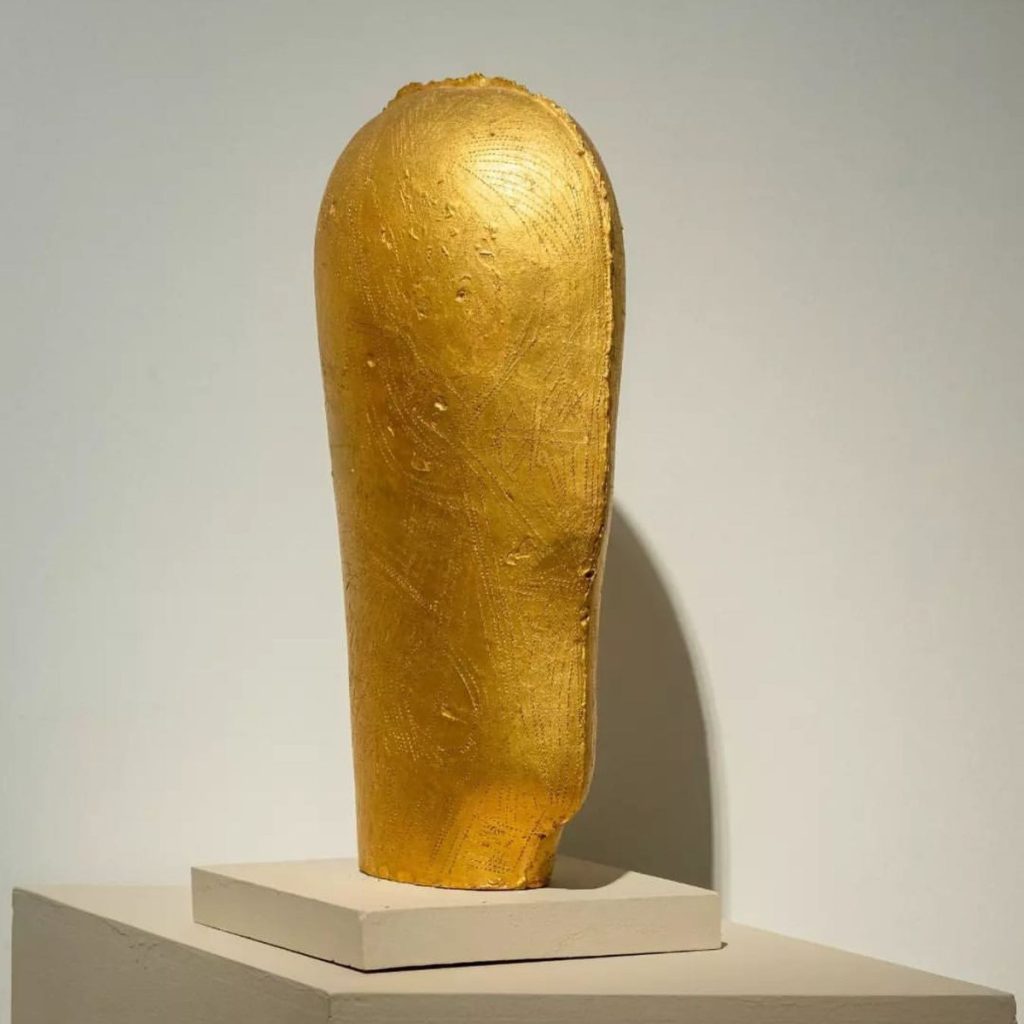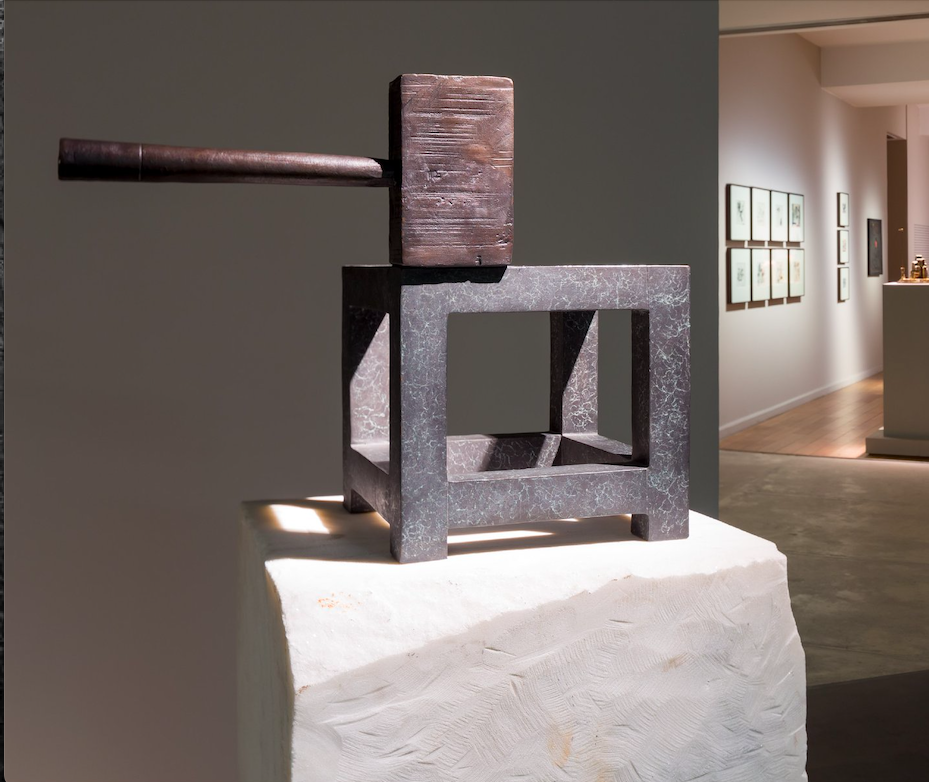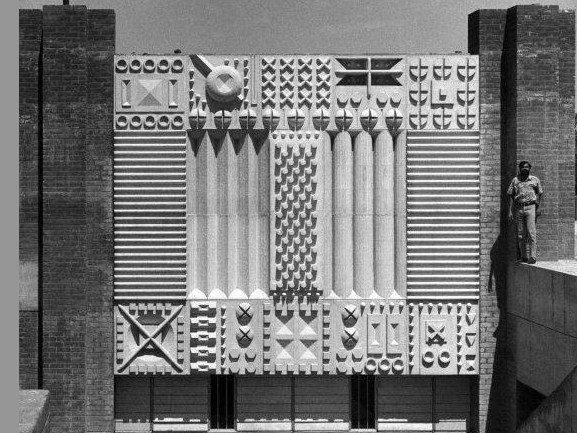
Himmat Shah is considered one of the major sculptors of post-independence India. Born in 1933, he experienced a brief glimpse of the colonial period, but at the age of 14, he decided to leave home to pursue art. More than just an aspiration to be an artist, he felt the need to escape the strict confines of a traditional Gujarati family life. He sought freedom and a way to explore the world.
He found shelter in a small village temple in Rajasthan, where the priest, intrigued by Himmat’s talent, decided to take care of him.
There are several versions of this story, but the one he told me is that he stayed at the temple and began drawing and painting. Some pilgrims visiting the temple bought his work, and he was able to save enough money to attend the Baroda School of Art.
There, he met the artist Bendre, who helped him learn to express his work. Bendre encouraged him to develop his own style, and eventually, Himmat left the art school without a formal degree and travelled, making his way to Delhi.

Terracotta head plated with gold leaf.
Having lived a frugal life in order to survive, Himmat never compromised his art – whether painting or sculpture – to make a living. He existed on very little. He was fortunate to have a friend in photographer Raghu Rai, who offered him a place to stay for many years. They had a lifelong bond and friendship.
During this period, Himmat was awarded a scholarship to study in Paris, where he became familiar with modern masters. He had a vast collection of books on Western artists, but it was perhaps Picasso who influenced him most.
Yet, he was determined to create a style that was uniquely his own, one that would make a mark on the world of Indian art.
In the early stages of his sculpting career, Himmat worked mostly with terracotta and continued in this medium for many years. He produced a remarkable body of work, transforming common objects into pieces of art.
One example is the “Torso” shown here, made from a slip cast of a Suntory whisky bottle.

‘Torso’ in terracotta.
His works during this period often incorporated simple plastic items, such as beakers and funnels, which he brought to life in clay.
Himmat was recognised by the Lalit Kala Academy and was provided a studio in the Garhi Village in south Delhi, a space built for sculptors inside an old ruin. Lacking a place to stay, he lived in the studio for many years, where he created some of his finest works. His abstract sculptures and the legendary terracotta heads were developed during this time.
I first met Himmat when I bought one of his heads to exhibit at the Khirkee Gallery, a space exclusively dedicated to sculpture. He spent time there and helped design the first show.
This was the beginning of a close friendship, where we often discussed philosophy and art. He used to tell me, “With philosophy, there are limits, but with art, there are none.”
Himmat’s work received significant recognition when the Kiran Nadar Museum hosted a retrospective in 2016. The curator had gathered pieces from all periods of his career, demonstrating that his work was unlike any other.
During this time, Himmat began casting sculptures in bronze, having gained the patronage needed to cast such expensive pieces.

‘Hammer on the Cube’ in bronze.
One of his favourites was the “Hammer on the Cube”, where he creates tension and imbalance in the sculpture. His collection of heads is varied, with each piece more striking than the last. Though it is difficult to fully describe his contribution to art here, he became a major force in the world of sculpture and design.
Early in his career, Himmat was given the opportunity to design and build a huge mural for a school building in Ahmedabad. I believe this to be a seminal work that took years to complete.
The majesty of this mural is hard to describe, but a picture included here illustrates its brilliance and scale. The models for this mural are now part of the National Museum of Modern Art collection in Delhi, where they have become sculptures in their own right.

Mural made in concrete in a school in Ahmedabad.
After the age of 70, Himmat became financially successful from selling bronzes, which could be made in multiple editions. This allowed him to live comfortably, but he never stopped working. Even at the age of 90, he began constructing a new studio on the outskirts of Jaipur.
Himmat was known for working at all hours and had an immense amount of energy. He also made time for students who sought him out. In his later years, he was fortunate to travel and see the work of the masters.
He lived a frugal life in his Jaipur home, spending most of his money on new projects. His only weakness was an affinity for fine clothes, which he bought without hesitation. When he worked in London, he had his Western clothes custom-made by the best tailors, always dressing impeccably.
Himmat will be remembered as a great individual – someone who spent his life completely immersed in the world of art, using it as a means to achieve complete freedom in living.
Ramu Katakam is an architect.
All photos via Ramu Katakam.




